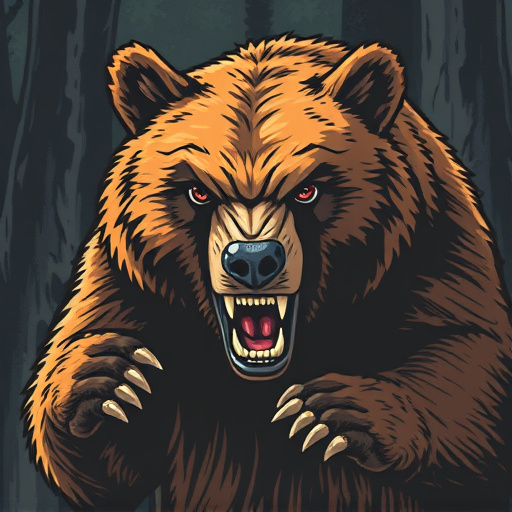Bear spray is a valuable tool for defending against aggressive bears, but its 30-foot effective range requires proper usage alongside noise making and avoiding known habitats to deter charges from grizzlies reaching up to 40 mph. Understanding wind conditions, concentration, and the bear's behavior maximizes its effectiveness when faced with a charging grizzly.
“Discover the power and limitations of bear spray as a self-defense mechanism in encounters with charging grizzly bears. Understanding the effective range—typically around thirty feet—is crucial for safety in backcountry settings. This article explores the science behind bear spray, including factors like terrain, weather, and bear behavior, which can influence its performance. Learn how to maximize the efficacy of bear spray and make informed decisions when facing off against these formidable predators, especially in situations where traditional deterrents may fail.”
- Understanding Bear Spray Range Limitations
- Factors Influencing Effective Distance
- Charging Grizzly Bears: Behavior & Speed
- Maximizing Bear Spray Efficacy
Understanding Bear Spray Range Limitations
Many outdoor enthusiasts and hikers carry bear spray as a crucial defense mechanism against unexpected encounters with aggressive bears, particularly grizzlies known for charging at close range. However, understanding the effective range limitations of bear spray is essential when navigating potential bear country. The average bear spray has an effective range of about 30 feet (10 meters), meaning you must accurately target the bear within this distance to ensure its effectiveness.
When compared to a charging grizzly bear, this range may seem short. Grizzlies can reach speeds up to 40 miles per hour during a charge and often close the gap quickly. Therefore, carrying bear spray is not a replacement for sound bear safety practices like making noise while hiking, avoiding known bear habitats, and knowing how to react if you encounter a bear. It’s a valuable tool when used appropriately within its effective range limitations.
Factors Influencing Effective Distance
The effectiveness of bear spray in repelling a charging grizzly bear is influenced by several factors, including the user’s distance from the bear, wind conditions, and the spray’s concentration. At a close range of thirty feet, bear spray can be highly effective due to its direct impact on the bear’s eyes and respiratory system. However, as the distance increases beyond the stated effective range, the spray’s potency diminishes significantly. Wind direction plays a crucial role; a tailwind can carry the spray away from the target, while a headwind might blow it directly at the bearer, negating its effect. Additionally, the spray’s concentration and distribution—some brands offer higher concentrations for enhanced distance—all contribute to its overall effectiveness beyond thirty feet.
Charging Grizzly Bears: Behavior & Speed
When considering the effectiveness of bear spray, it’s crucial to understand the behavior and speed of charging grizzly bears. These majestic yet formidable creatures can reach speeds up to 35 miles per hour (56 km/h) when they sense danger or are protecting their cubs. Their quick reflexes and powerful builds make them a force to be reckoned with.
In comparison, bear spray offers a crucial defense mechanism, providing an effective range of up to thirty feet (9 meters). When used properly, it can deter a charging grizzly by irritating its eyes and respiratory system. However, timing is everything; the spray must be applied when the bear is within this thirty-foot range, which requires quick thinking and awareness in potentially dangerous situations.
Maximizing Bear Spray Efficacy
Maximizing the efficacy of bear spray is paramount when venturing into bear country. Unlike other self-defense options, bear spray offers a non-lethal yet effective deterrent against aggressive bears. When used correctly, it can create a buffer zone of up to thirty feet—a crucial distance for giving you time to retreat or deter a charging grizzly.
Understanding the mechanics behind its effectiveness is key. Bear spray releases a potent mix of capsaicin and other irritants that target the bear’s eyes, nose, and lungs. Proper technique involves aiming high, as bears have poor vision, and spraying in an ‘X’ pattern to ensure complete coverage within the effective range. Regular practice and staying calm under pressure are essential skills to master for maximizing this spray’s potential during a potential encounter with a charging grizzly.
Bear spray is an effective deterrent for charging grizzlies, but understanding its thirty-foot range limitations and influencing factors is crucial. By recognizing behavior patterns and maximizing spray efficacy, users can ensure better protection in bear country. While bear spray vs. charging grizzly bears is a significant consideration, staying informed and prepared makes a world of difference in potential encounters.
